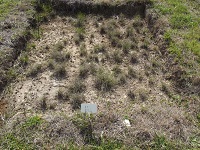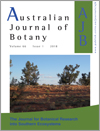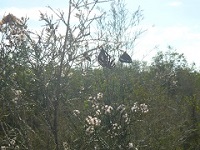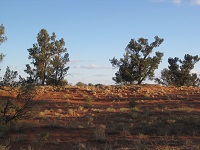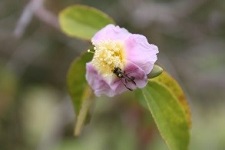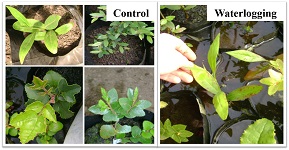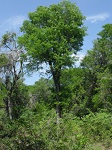Australian Journal of Botany
Volume 66
Number 1 2018
Scalping (topsoil removal), grass canopy removal by burning or slashing, nutrient reduction by adding carbon to the soil and native plant recruitment improvement by adding seed were compared as tools for restoring Cumberland Plain Woodland ground cover. The greatest increases in native species numbers occurred when (i) the topsoil was scalped and native seed added, (ii) the grass canopy was burnt, and soil carbon and native seed added; or (iii) the grass canopy was slashed and native seed added.
The endangered tree Melaleuca irbyana (Myrtaceae) dominates the critically endangered, south-east Queensland swamp tea tree forest where there are active recovery programs. New populations were recently found in the Brigalow Belt outside its previously known range and were found to be genetically distinct. The species populations contain moderate genetic diversity and are not principally clonal. There is considerable differentiation among populations, particularly between the geographic regions it occupies, so care should be taken to consider local provenance in restoration plantings.
Callitris glaucophylla is an iconic Australian conifer, but in much of the arid zone there has been little recent regeneration. We found that near Roxby Downs, at the arid extreme of its range, good rain in 2010/11 did not lead to seedling establishment, probably because the wet period was not long enough. Radiocarbon dating showed these trees have a maximum lifespan of ~270 years, which together with instrumental climate records suggests that here, trees of this species have only 2–8 climatic opportunities to reproduce.
Our understanding of how recruitment influences population genetic structure of plants endemic to granite outcrops is limited. I surveyed genetic diversity, growth rate and survival, and parentage of seedlings in a rare recruitment event of the granite-endemic tree Eucalyptus caesia. The seedlings were less heterozygous than adults, yet there were no trends in heterozygosity or fixation values of seedlings over 20 months to match those of adults, and no evidence for reduced growth rates or survivorship of relatively inbred offspring. E. caesia may have mechanisms in place to cope with low genetic variation and genetic insularity.
Santalum spicatum contains a valuable, terpene-rich essential oil in its heartwood. In this study we sought to improve understanding of genetic and environmental contributors to chemical variability. Results showing links of variability with genetics and the environment will be used to direct future studies which aim to improve breeding options for terpenes sought by industry. Further work should be directed at finding additional causes of terpene variation across species of Santalum, which can be used to improve commercial and conservation goals.
The position of floral nectaries is an important character. Nectar secretion and its relationship with floral visitors is an interesting aspect.
In evergreen rainforests, deep shade and waterlogging are two common stressors affecting seedling performance in the understorey. We tested the hypothesis that high levels of carbon storage confer shade- and waterlogging- tolerances by preventing carbon limitation under stress. Results showed that shade-tolerant species exhibited lower carbon storage and performed better under waterlogging conditions than shade-intolerant species, suggesting that carbon storage does not confer waterlogging tolerance. This information will help in understanding the dynamics of the forests where species with contrasting shade tolerance occur.
The study of the reproductive biology of promissory wild species is essential for their culture, conservation and plant breeding. We studied the breeding system, floral morphology and floral visitors of Gleditsia amorphoides. It is a tree endemic to the Chaquenean Forest of South America, with multiple uses, such as, for example, as a source of timber and products with industrial applications, such as galactomannans and saponins. Our results showed that G. amorphoides is a xenogamous species with functionally unisexual flowers that require pollinators (beetles, flies and bees) for the formation of seeds and fruits.
